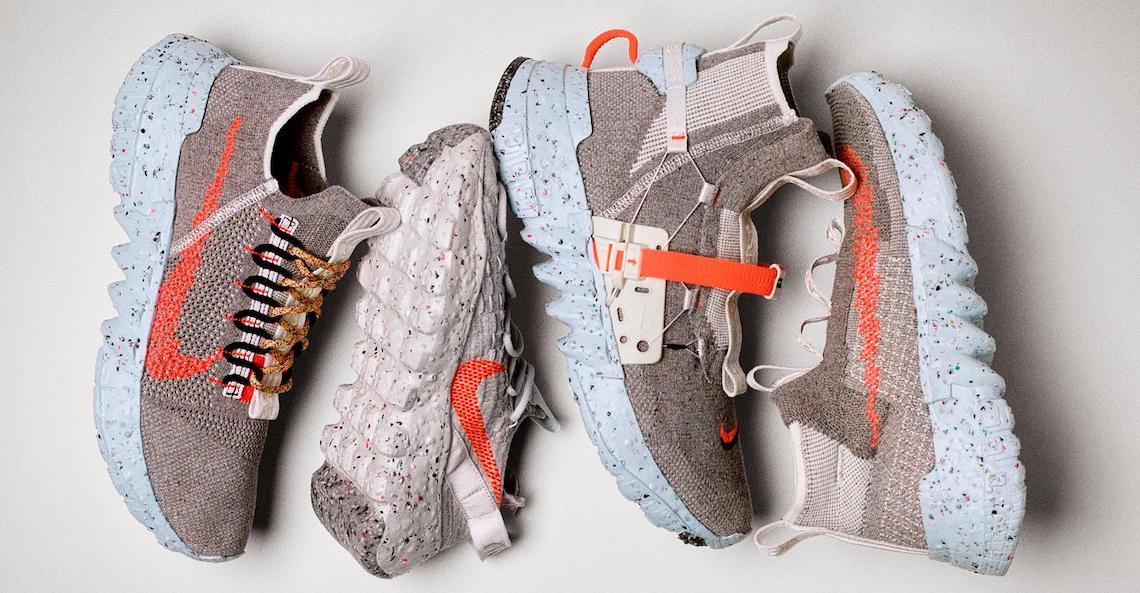Nike is looking to improve its sustainability credentials by focusing on its materials.
Noel Kinder, Nike’s chief sustainability officer, said that 80% of the brand’s carbon footprint comes from the sourcing of its materials and manufacturing. While Nike is one of the largest users of recycled polyester in the world, Kinder said he believes materials are where Nike can have the biggest impact. Kinder, while at COP26 in Glasgow Scotland in November 4, signed a pledge with the Renewable Energy Buyers’ Alliance to reduce its carbon footprint by 30% and use 100% renewable energy by 2025. Currently, Nike is already at 80% renewable energy, Kinder said.
For a company as big as Nike — it made $44 billion this fiscal year — small changes can have a massive impact on the environment.
“We did our first recycled garment back in 2006,” Kinder said. “It was just a single scratchy singlet for Portuguese athletes. But now our volumes are so big that our recycled polyester alone reuses more than a billion plastic bottles a year. If you pick up a random workout T-shirt in our store, most likely it has some recycled elements in it already. You start these journeys small and work your way up.”
Kinder pointed to Space Hippie, a new shoe line Nike debuted last year that is made of 90% recycled materials, as its biggest step forward. Seventy percent of all products made by Nike have at least some recycled material in them, but Nike wants to aim higher. A big part of getting there is educating the consumer on why sustainability matters, Kinder said.
Nike tracks the percentage of recycled material used in each product (measured by weight) and then determines whether it gets a “Sustainable Materials” designation on its website.
Another material, Nike’s leather alternative called Flyleather, is also getting an update in 2022. Currently, Flyleather is made from 50% recycled leather material, but that will change in the future. Kinder did not give additional details on what the update would entail.
Ad position: web_incontent_pos1
At COP26, Kinder said Nike has also been focused on using the weight it has in the manufacturing space to influence its partners. For example, Nike joined 28 other brands including H&M last year to encourage the country of Vietnam, where it does some of its manufacturing, to transition to renewable energy. While Nike’s commitment to 100% renewable energy by 2025 applies only to its own offices, stores and factories, encouraging manufacturing partners to make the switch to renewable energy will help bring down the company’s overall emissions. And countless other brands that manufacture in Vietnam will also benefit.
Working across company lines, like Nike with H&M, is becoming much more common, when it comes to sustainability.
“On a day-to-day basis, you tend to see other companies as competitors,” said Caroline Danehy, co-founder of swim brand Fair Harbor, which is part of multi-brand sustainability group Mission Brand Alliance. “In sustainability, you want everyone in on it, working together and not against each other.”
Kinder said he hopes more brands across fashion will make specific commitments on specific timelines, rather than offer vague promises.
“I’m fortunate to have relationships with my peers at other companies,” Kinder said. “I know practically all of them on a first-name basis. Not to be cliche, but there is no finish line on sustainability. There’s a need to set aside competition when it comes to this. What we need to do [now] is work faster toward these goals.”




